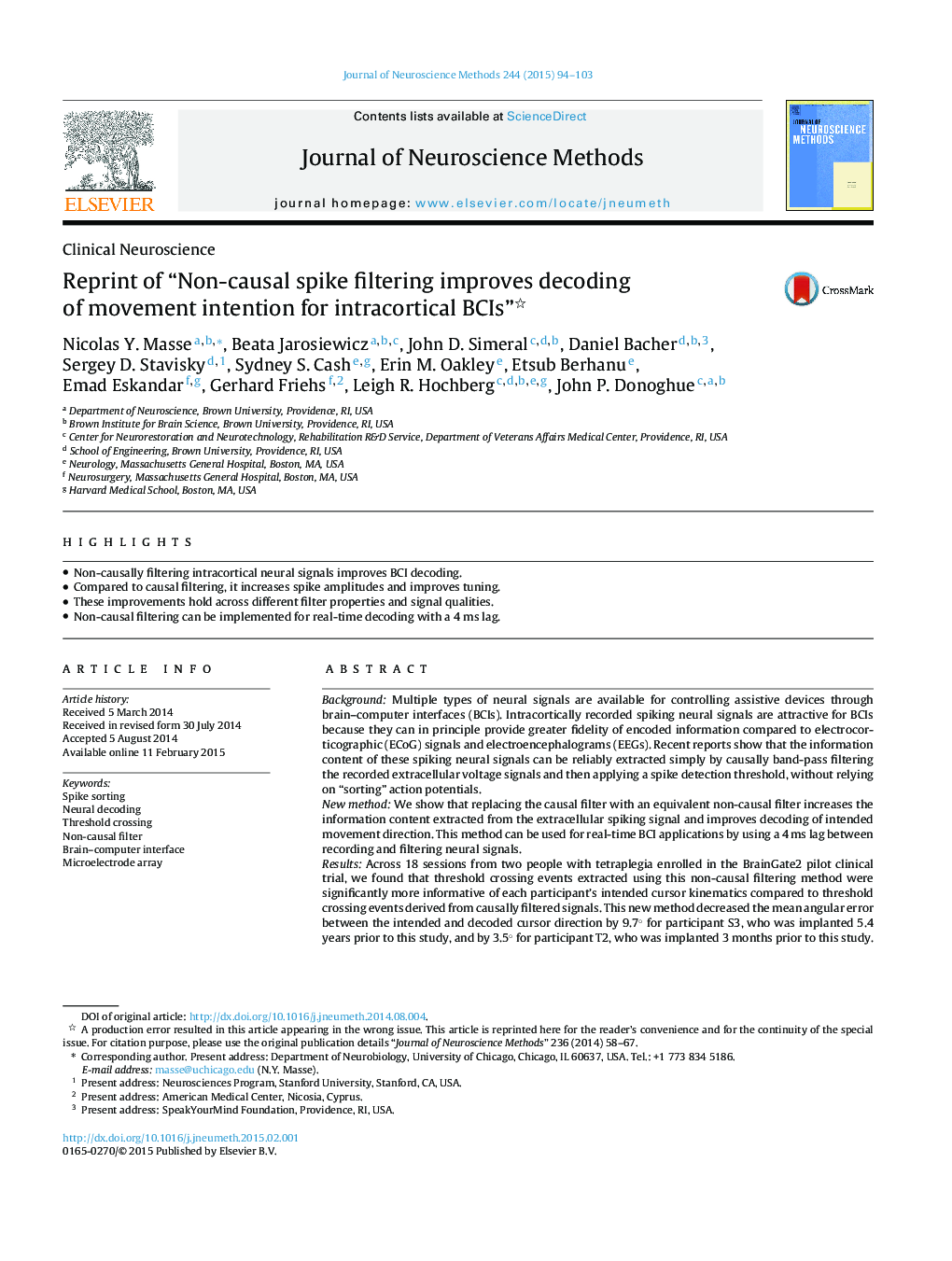| کد مقاله | کد نشریه | سال انتشار | مقاله انگلیسی | نسخه تمام متن |
|---|---|---|---|---|
| 6268311 | 1614625 | 2015 | 10 صفحه PDF | دانلود رایگان |

- Non-causally filtering intracortical neural signals improves BCI decoding.
- Compared to causal filtering, it increases spike amplitudes and improves tuning.
- These improvements hold across different filter properties and signal qualities.
- Non-causal filtering can be implemented for real-time decoding with a 4 ms lag.
BackgroundMultiple types of neural signals are available for controlling assistive devices through brain-computer interfaces (BCIs). Intracortically recorded spiking neural signals are attractive for BCIs because they can in principle provide greater fidelity of encoded information compared to electrocorticographic (ECoG) signals and electroencephalograms (EEGs). Recent reports show that the information content of these spiking neural signals can be reliably extracted simply by causally band-pass filtering the recorded extracellular voltage signals and then applying a spike detection threshold, without relying on “sorting” action potentials.New methodWe show that replacing the causal filter with an equivalent non-causal filter increases the information content extracted from the extracellular spiking signal and improves decoding of intended movement direction. This method can be used for real-time BCI applications by using a 4 ms lag between recording and filtering neural signals.ResultsAcross 18 sessions from two people with tetraplegia enrolled in the BrainGate2 pilot clinical trial, we found that threshold crossing events extracted using this non-causal filtering method were significantly more informative of each participant's intended cursor kinematics compared to threshold crossing events derived from causally filtered signals. This new method decreased the mean angular error between the intended and decoded cursor direction by 9.7° for participant S3, who was implanted 5.4 years prior to this study, and by 3.5° for participant T2, who was implanted 3 months prior to this study.ConclusionsNon-causally filtering neural signals prior to extracting threshold crossing events may be a simple yet effective way to condition intracortically recorded neural activity for direct control of external devices through BCIs.
Journal: Journal of Neuroscience Methods - Volume 244, 15 April 2015, Pages 94-103